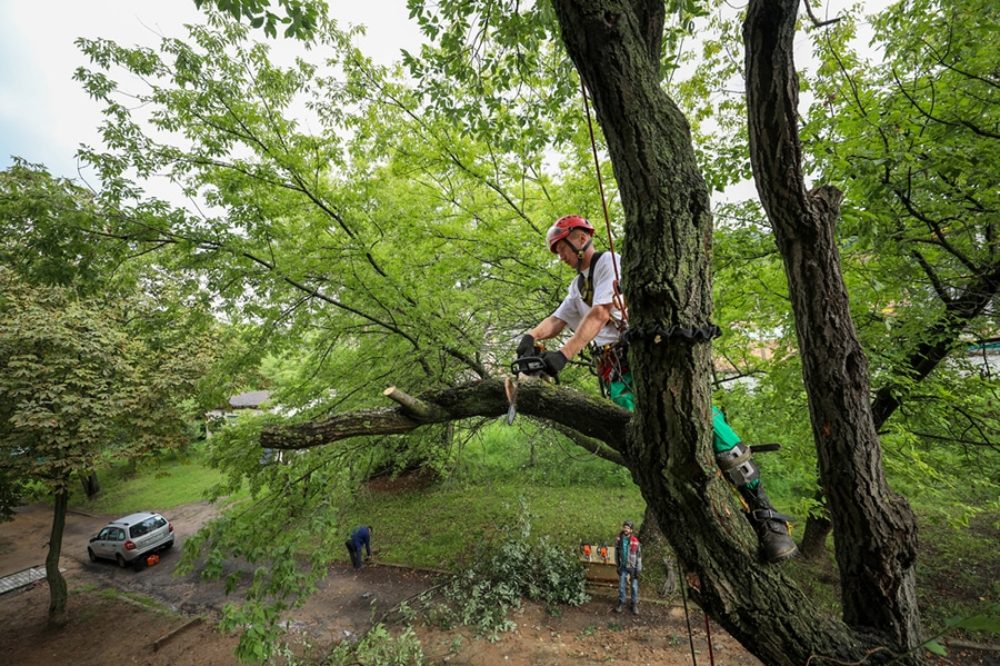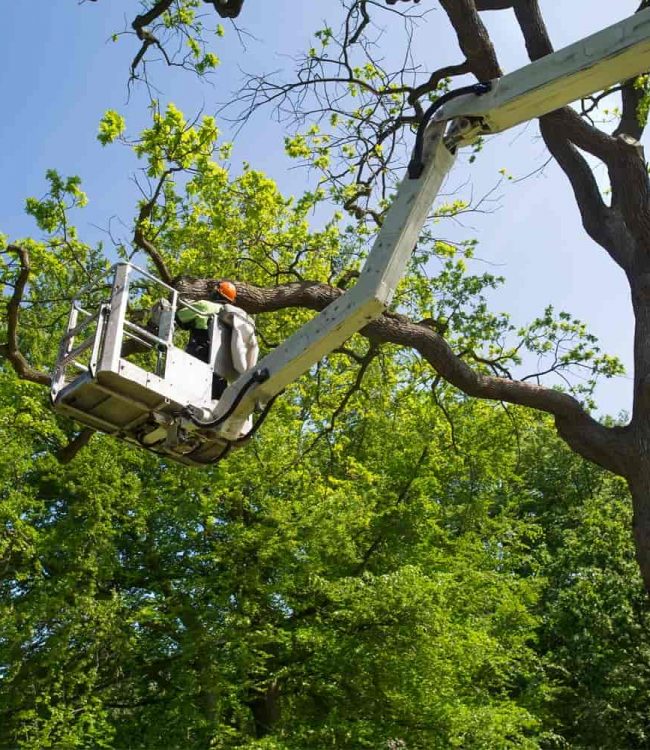Tree cabling uses strong bolts and cables to support the branches of a tree. Often, cabling is used to bolster limbs that are in danger of breaking, but it’s also used to guide limbs into growing more symmetrically. However, cabling isn’t a substitute for proper trimming and pruning, nor can it save a branch or even a tree that is badly damaged or already dead.
How Do You Know If Your Tree Needs Cabling?
Though only a professional arborist can tell you with certainty if your tree could benefit from cabling, there are some signs that cabling might be in order. Splitting branches is a sign that the tree may need help. Sometimes this happens in the winter after the tree experiences sunscald. This happens on warmer winter days when one side of the tree is exposed to sunlight. That side of the tree starts to come out of dormancy, but at night when the temperature plummets, the bark can split due to the trauma.
You may also notice a V-crotch stem on your tree. This is a tree with one trunk and two branches growing out of it in the shape of a V. V-crotch stems are actually considered an emergency because the branches lack connective tissue that secures them to the trunk. This makes them so weak that the entire tree can split, especially if the “V” is at a large angle. V-crotches are best corrected when the tree is still young.
A tree full of fruit is usually a joyful thing to see, but a lot of fruit or nuts can overload branches and weaken them. Tree branches can also be weighed down and injured by layers of snow and ice. Cabling the tree can balance the weight of its branches and give them support during fruiting or winter storms.
A tree that has a severe lean might also benefit from cabling. Frankly, most trees have a bit of a lean to them, but if the tree starts to lean after a storm, if the ground looks torn up around it, or if you can’t look at your tree without worrying that it’s going to simply fall over, you might want to call your arborist.
What Does Tree Cabling Entail?
During the tree cabling procedure, the arborist drills holes in the affected limb, then drills holes in a limb strong and healthy enough to support it. The cable is then cut to the right length, pulled through the holes, and fastened by a pulley system. The arborist makes sure that the cable is taught enough to support the branches but not so tight that the branches are damaged. Sometimes a rod is used in place of a cable.
Call for More Information About Tree Cabling
Tree cabling offers several benefits for a tree that needs a bit of support. They include helping the tree survive storms, distributing its weight, and helping it heal after it’s been damaged in a storm, a freeze, or a heat wave. If you think a tree on your property needs cabling, call our arborists at Central Arbor Tree Care of Peoria.






